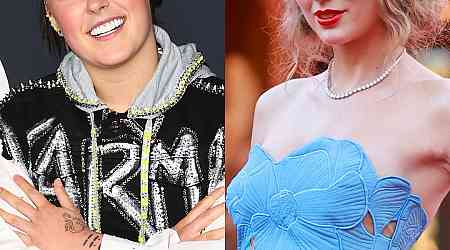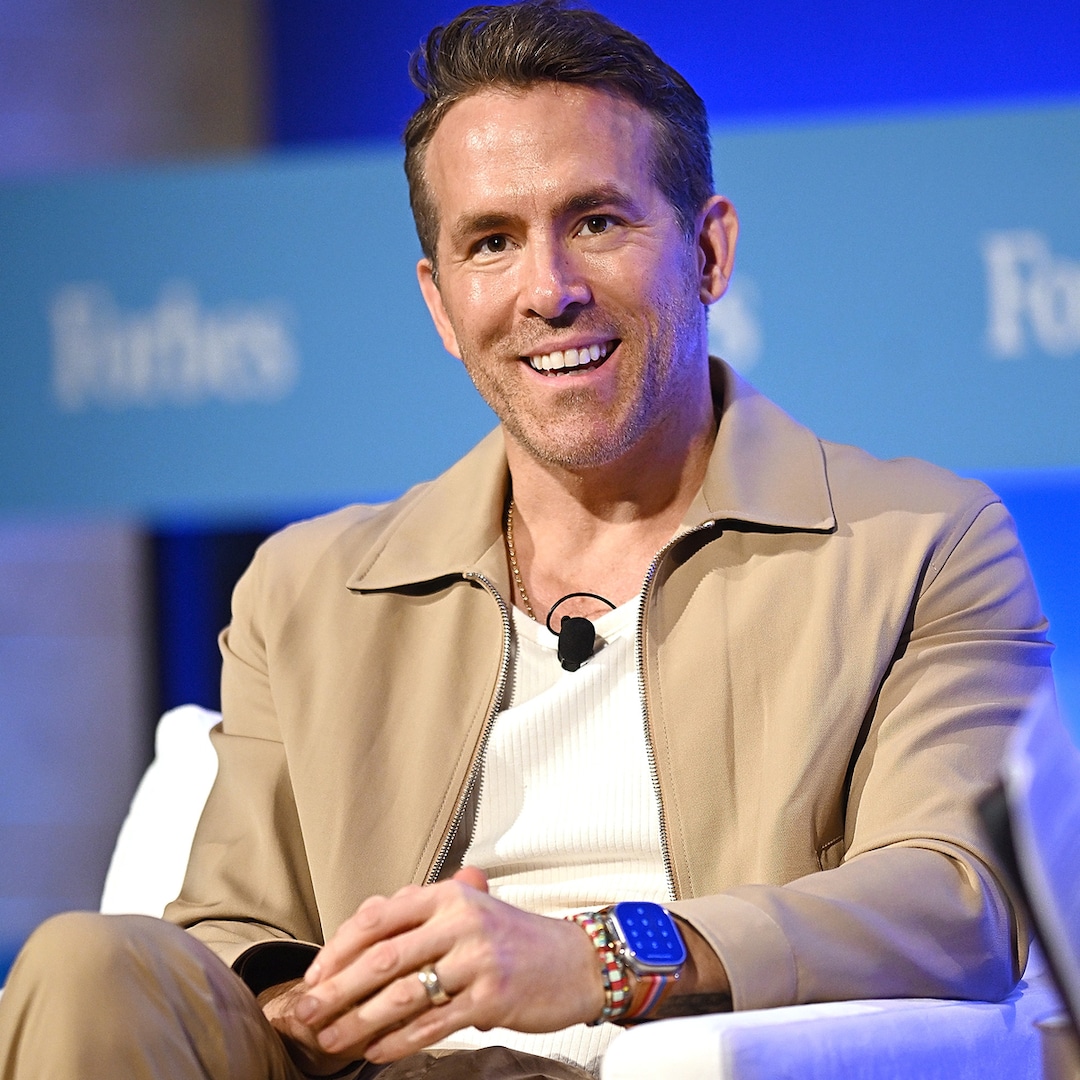Rizz. Gyatt. Hawk Tuah. If you’re rolling your eyes at what any of that jargon means, you’re safe. If you understood every word, you, dear reader, might have brainrot.
Brainrot, as defined by The New York Times, is “low-value internet content and the effects caused by spending too much time consuming it.” It’s the language of the doom scrollers, the chronically online, the terminally logged-on. Said effects can include talking like a walking TikTok For You Page and an ever-shrinking attention span. Some people proudly proclaim their brainrot status. Others shamefully hide their internet obsession. For better or worse, it’s the connective tissue between the millions of users overconsuming social media.
And like with anything trendy, fashion is smack dab in the middle of it, brainrotting right alongside you — or, perhaps, for you.
@marcjacobs @bellahadid039 ♬ original sound - marcjacobs
In 2024, designer labels have found major breakthroughs online by trading in their highly-produced videos for those that look a lot more like what’s actually going viral on TikTok. “Brands that are succeeding on TikTok have gone from being reluctant about leaning into unique content strategies to embracing them with an open mind,” Coco Mocoe, a digital media marketer known for dissecting internet phenomenons on the platform, told Hypebeast.
One brand that has discovered the secret sauce is Marc Jacobs. Just last month, the brand’s TikTok garnered more than 43 million views by sharing content in a manner that you would never expect from a luxury fashion label, becoming fluent in the platform’s language and building a strong presence by confidently speaking it.
Warning: brainrot ahead.
The page features satirical “fit checks” from creator Noah Millz and his alter-ego account “White Boy On The Beat,” as well as the Laundry Day Boys (the high school friends turned viral boyband sensation) performing a Marc Jacobs parody of Sabrina Carpenter’s “Espresso” in the label’s Soho shop. Elsewhere, Amira Bappe’s bootleg Bella Hadid character executes the “waterslide splashzone transition” in the brand’s knitwear; DJ Mandy cooks up a remix of Nicki Minaj’s famous lyrics — “I only argue with him when the Lakers on/Other than that, I'm gettin' my Marc Jacobs on” — in her kitchen, and the app’s favorite model, Alex Consani, gets up to her hilarious antics while “trapped” in a Marc Jacobs-branded water tank on set of the brand’s campaign shoot. How's your head?
@hypebeast We see you @marcjacobs #MarcJacobs #TikTokFashion #FashionTok #Viral ♬ original sound - HYPEBEAST
It’s calculated chaos that earns the gaze of Gen Z, much of whom is already familiar with all of the aforementioned jokes, trends and faces thanks to the content they’re organically served. But instead of simply sending product to of-the-moment creators, the label is fully welcoming them into its universe to create videos that build on their virality with only a splash of logo. Featured talent might be wearing Marc Jacobs’ clothes or making a video in the label’s store, but they’re not trying to explicitly sell you anything. The brand is simply letting the platform’s younger users know that it’s aware of what they’re talking about — all in the name of forming a bond with the next generation of consumers.
“The biggest mistake I see brands make is getting onto a platform and yelling over everyone with a megaphone about how cool they are,” Mocoe says, explaining this most often occurs through paid advertisements with rigorous scripts for hired talent. “It’s the brands that sit quietly for hours watching what’s happening on the platform, figure out what people are saying and chiming into the conversation with strategic added value that find the most success.”
Here, LOEWE's page offers another excellent case study. The Jonathan Anderson-led fashion house has amassed more than 30 million views in the last 30 days by leveraging timely trends and sounds with famous ambassadors and buzzy creators alike.
@loewe Ok, but we need the phone back now please. #LOEWE #MetGala #TaylorRussell #GretaLee #JamieDornan #JoshOConnor @Dan Levy #AmbikaMod @ayo #AlisonOliver @Omar Apollo ♬ original sound - LOEWE
At the Met Gala, while most high-fashion brands were simply posting videos of their attendees ascending the steps, LOEWE tasked its A-list guests with playing TikTok’s “pass the phone” game. While the brand did share professional clips of Taylor Russell, Ariana Grande, Ayo Edebiri and more entering the museum, the label’s playful, low-quality (and perhaps frivolous) video of its heavyweight roster cracking playful spats at one another in a nearby hotel outperformed those more traditional posts by more than three million views. And that’s only the tip of LOEWE’s chronically online strategy.
On the set of its Fall/Winter 2024 pre-collection campaign, ambassadors like Kit Connor and Enzo Vogrincic participated in the “I’m [blank], of course I [blank]” trend. While filming LOEWE’s sidesplitting spelling bee campaign, Dan Levy created a “bop or flop” video, and Aubrey Plaza earned millions of views for her kooky behind-the-scenes frolics. In hair and makeup for another photo shoot, Greta Lee read extremely brainrot-y phrases aloud — “Mother’s face card never declines! Queen is in her lunch era!” — from an iPhone screen with confusion. “Offering mother her daily affirmations,” the brand explained in the caption.
It would take a chronically online Gen Z-er to recognize the reach potential for this content style, especially for that of legacy fashion brands like Marc Jacobs and LOEWE, both of whom have maintained traditional digital identities up until the onset of TikTok. It’s the shock factor — the idea that a high-fashion label would forego its pristine image and acknowledge Gen Z’s memeology so fiercely and directly — that keeps the view counts high and the brands all the more relevant among youth.
Call it vapid. Call it brilliant. Either way, it’s working.
"Jacquemus has really mastered [CGI content] in a way that hits the internet just right.”
Brainrot, in its many iterations, goes much deeper than talent-led content. Some accounts are dedicated solely to creating content for the terminally online, like “Fort History,” which remakes popular film and television clips with relevant internet terms. Then there are the ASMR-style videos of hydraulic press machines crushing miscellaneous objects or wild CGI depictions of gargantuan tennis balls rolling over cityscapes, which set viewers into peaceful states of mind-numbing. (These are the clips you’re likely flicking through before TikTok’s automated “Are you scrolling instead of sleeping?” reminder comes across your FYP). In the latter category, notably, fashion and beauty have carved out a space for viral experimentation.
King of surrealist marketing Simon Porte Jacquemus' namesake label leads the fashion pack in CGI content. The brand has created videos of its Bambino bags rolling through the streets of Paris to the Opéra Garnier, swimming through Lake Como, tumbling in a Parisian curbside washing machine and hanging from serene apple trees. The label has also dreamt up clips of massive lemons falling from the sky over the South of France, refrigerators holding ice-cold versions of its accessories and a gargantuan depiction of its LE CHOUCHOU book flipping in the breeze of Versailles. Jacquemus has constructed a digital fantasy world that champions escapism — and there’s a case to be made that this content provides a similar level of mindlessness to those crusher videos, just with higher production value.
“CGI content can be polarizing. People love it and love to hate it, which is why it goes viral,” Mocoe says. “But Jacquemus has really mastered it in a way that hits the internet just right.” She’s correct: the top comments on the brand’s CGI posts usually read something along the lines of “Jacquemus’ marketing team deserves a raise,” and the label’s engagement soars upwards of 10 million views in several cases.
View this post on Instagram
This is not to say that fashion’s classic social media strategies are no longer effective. Jacquemus’ traditional runway videos still record sky-high impressions, as do those of LOEWE. Megabrands like Louis Vuitton and Prada have exclusively maintained their high-quality video aesthetics. But of course, those labels have decades of loyal customers, ultra-famous ambassadors and massive advertising budgets to rely on, so there’s no real need for a revamp.
It’s the smaller brands, the emerging labels — and most noticeably the bigger houses seeking to gain Gen Z’s love — that consider very-online content the key to a new, larger audience. Because in a sea of TikTok Shop videos and increasingly more frequent sponsored posts, the last thing that doom scrollers want to watch is anything that resembles an advertisement.
But brainrot is no joke: Extremely Online: The Untold Story of Fame, Influence, and Power on the Internet author Taylor Lorenz told The New York Times that she believes the word is synonymous with “broken brain,” while Michael Rich, the pediatrician who founded Boston Children’s Hospital Digital Wellness Lab, stated that many of his patients call brainrot a “badge of honor.” Overall, there’s a lightheartedness associated with the term, despite people being self-aware enough to know that their growing screen times are likely harming them. At the same time, brainrotting trends and terminology unite online users with a semblance of IYKYK community, which, amid a national epidemic of loneliness, can be enticing.
Nonetheless, while brainrot persists, so will the content. And in the case of fashion marketing, it appears that a little bit of it pays off. It’s up to you how much you consume.





























